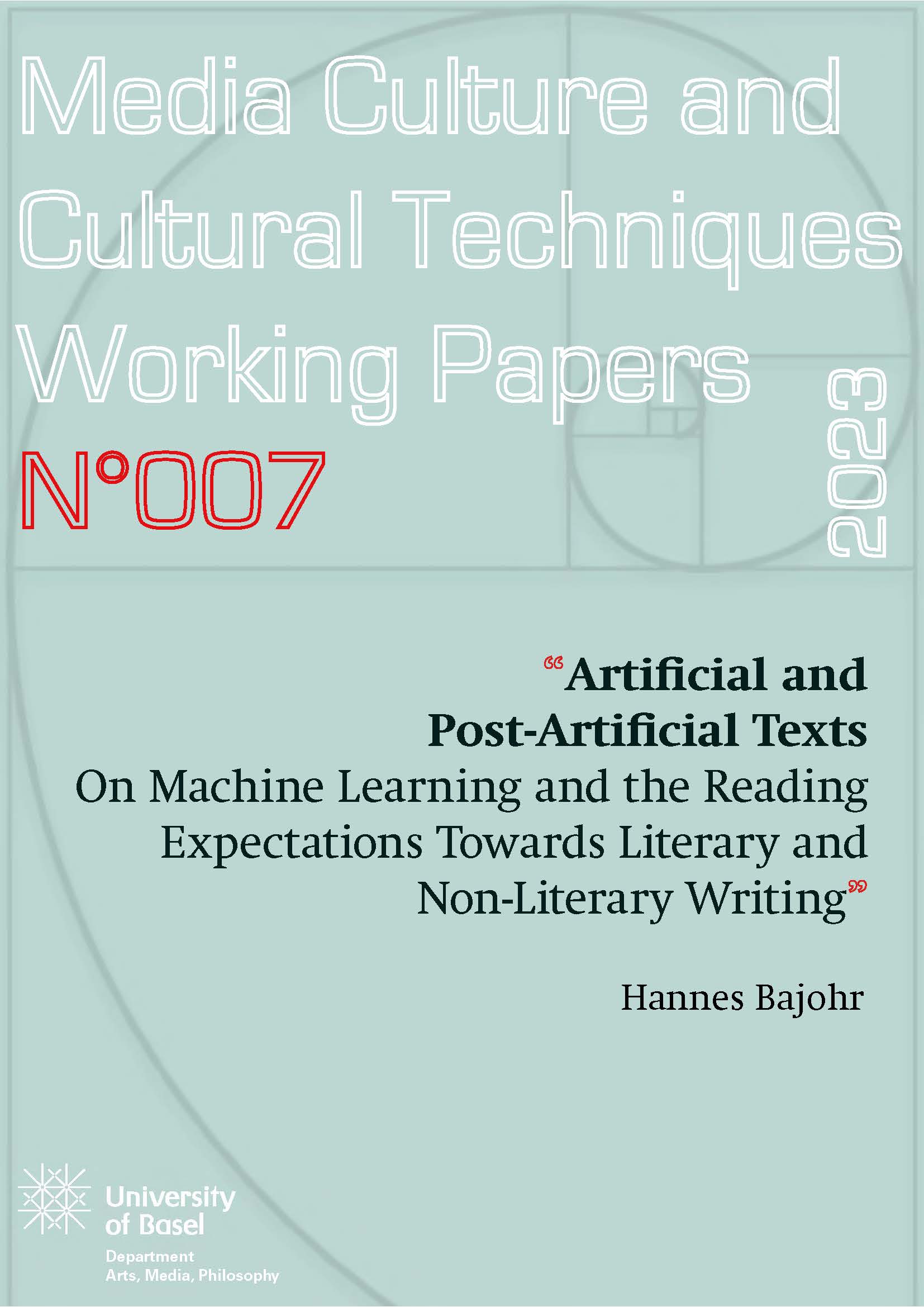Artificial and Post-Artificial Texts
On Machine Learning and the Reading Expectations Towards Literary and Non-Literary Writing
Schlagworte:
AI literature, Artificial texts, ChatGPT, Machine Learning, Language Models, Assistive Writing, AI WritingAbstract
In contrast to the times of Höllerer and Zemanek, we are now truly on the threshold of being surrounded by texts that are entirely artificial—while at the same time we continue to merge with our language technologies in our own writing, so that our text production is increasingly supported, extended, and partially taken over by assistance systems. Therefore, I want to discuss—quite speculatively, but always with an eye on the state of the art—two questions: first, what happens when we are confronted with artificial texts in addition to natural ones? How do we read a text that we can no longer be sure was not written by an AI? And second, what direction might this development take if, at some point, the distinction between natural and artificial itself becomes obsolete, so that we no longer even ask about it and instead read post-artificial texts?

Downloads
Veröffentlicht
Zitationsvorschlag
Ausgabe
Rubrik
Lizenz
Copyright (c) 2023 Basel Media Culture and Cultural Techniques Working Papers

Dieses Werk steht unter der Lizenz Creative Commons Namensnennung 4.0 International.
